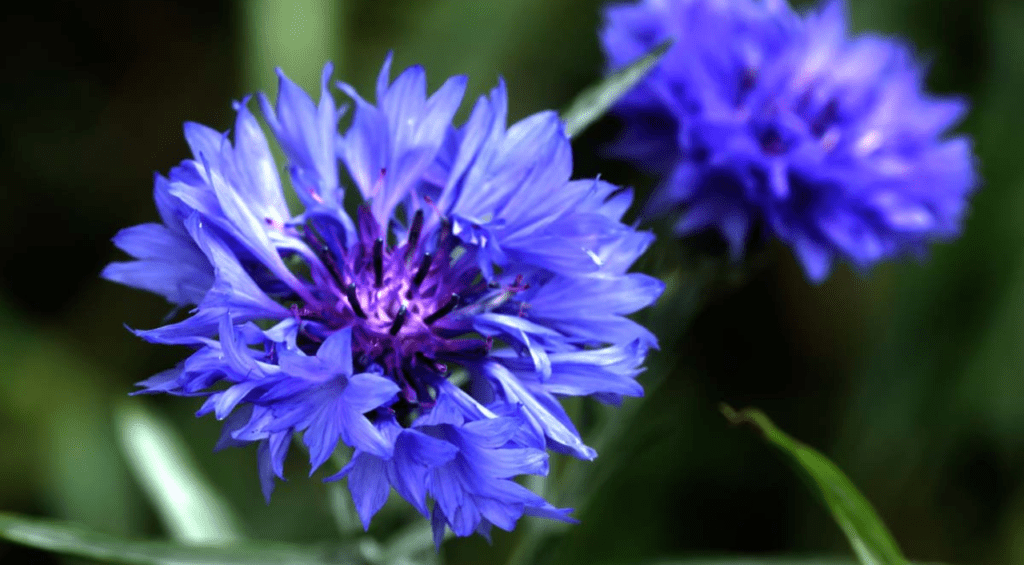
Bachelor Buttons Plant: A Colorful Addition to Your Garden
Bachelor buttons, also known as cornflowers, are a delightful addition to any garden. With their vibrant colors and easy-to-care-for nature, these plants are a popular choice for both beginner and experienced gardeners. In this article, we will explore the beauty of the bachelor buttons plant and provide tips on how to incorporate it into your garden. We will discuss the various colors and varieties available, as well as the best growing conditions for this vibrant and easy-to-grow flower. Whether you are looking to add a pop of color to your garden or attract pollinators, bachelor buttons are a wonderful choice.
Table of Contents
ToggleHistory and Origin
1.Botanical name and common names
The botanical name for the bachelor button plant is Centaurea cyanus, and it is also commonly known as cornflower.
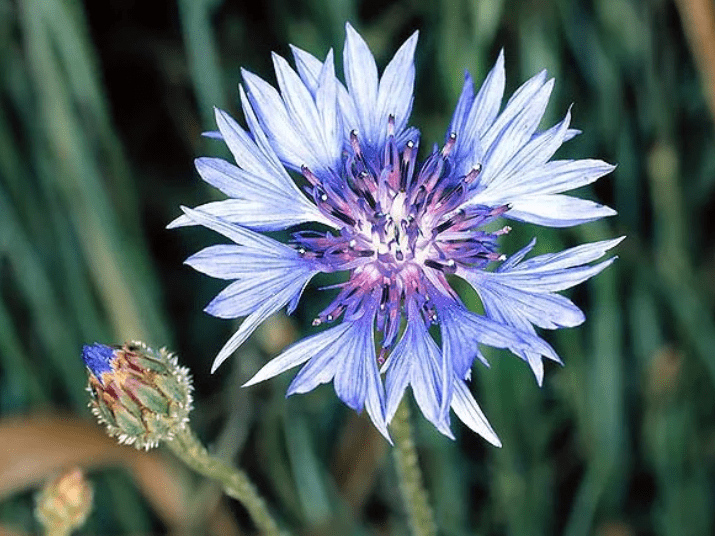
2.Historical background and origin
The bachelor button plant has a rich historical background and has been cultivated for centuries. It is native to Europe and has been used in traditional medicine and culinary applications. In the past, it was also used to make blue dye for textiles. Today, it is a popular garden plant and adds a beautiful touch of color to any outdoor space
3.Cultural significance and traditional uses
The bachelor button plant holds cultural significance in many countries, often symbolizing hope, love, and fertility. In traditional medicine, it has been used to treat various ailments such as eye infections and respiratory issues. Additionally, the flowers have been used in culinary applications, adding a mild, sweet flavor to salads and desserts. Its historical background and traditional uses make it a beloved and versatile plant for both gardening and cultural purposes.
Description and Characteristics
1.Physical appearance (size, shape, color)
The bachelor buttons plant, also known as Centaurea cyanus, is a beautiful and versatile addition to any garden. It is known for its vibrant and colorful flowers which come in shades of blue, pink, white, and purple. The flowers are small and daisy-like, and they can grow to be up to 3 feet tall. The plant itself has a bushy and upright growth habit, making it a great choice for borders or as a cut flower in arrangements. The bachelor button plant is relatively easy to care for and can thrive in a variety of soil types and growing conditions. With its rich history and cultural significance, the bachelor button plant is a wonderful addition to any garden.
2.Types and varieties
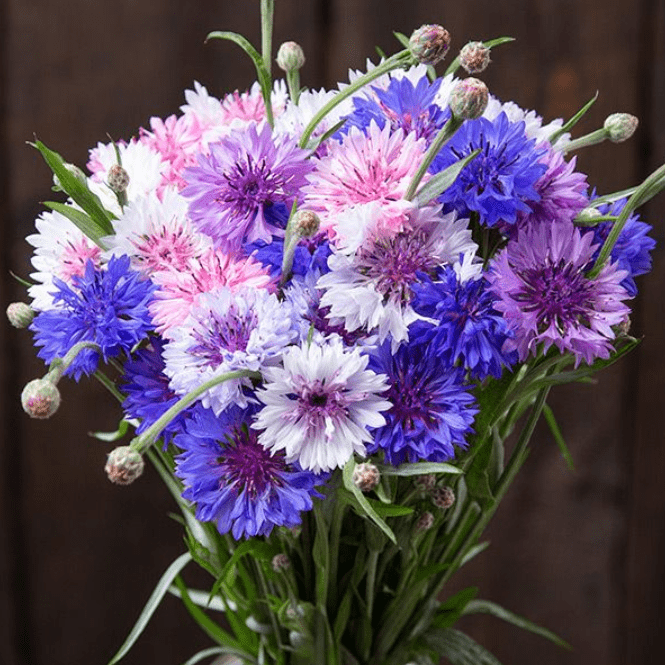
Types and varieties of bachelor buttons include the classic blue variety, as well as newer hybrids that come in shades of pink, white, and purple. There are also double-flowered varieties that have a more full and lush appearance. These different types and varieties allow for a diverse and colorful display in the garden. The bachelor button plant is also known for attracting pollinators such as butterflies and bees, making it a beneficial addition to any garden ecosystem. It is a beautiful and low-maintenance plant that can add a pop of color and charm to any garden landscape. Whether you are a beginner or experienced gardener, the bachelor buttons plant is a great choice for adding beauty and vibrancy to your outdoor space
3.Growth habits and lifecycle
The bachelor button plant has a bushy and upright growth habit, making it a great choice for borders or as a cut flower in arrangements. It is relatively easy to care for and can thrive in a variety of soil types and growing conditions. The plant comes in various types and varieties, including the classic blue variety and newer hybrids in shades of pink, white, and purple. There are also double-flowered varieties that have a more full and lush appearance. These different types and varieties allow for a diverse and colorful display in the garden. The bachelor button plant is also known for attracting pollinators such as butterflies and bees, making it a beneficial addition to any garden ecosystem. It is a beautiful and low-maintenance plant that can add a pop of color and charm to any garden landscape. Whether you are a beginner or experienced gardener, the bachelor button plant is a great choice for adding beauty and vibrancy to your outdoor space.
Growing Conditions
1.Ideal climate and hardiness zones
The bachelor button plant is relatively easy to care for and can thrive in a variety of soil types and growing conditions. It is important to note that this plant prefers full sun and well-drained soil. It can tolerate a wide range of temperatures and is hardy in zones 2-11, making it suitable for a wide range of climates. It is also drought-tolerant, making it a great option for areas with limited water access. Whether you live in a hot, dry climate or a cooler, wetter one, the bachelor button plant can thrive and add beauty to your garden landscape.
2.Soil requirements
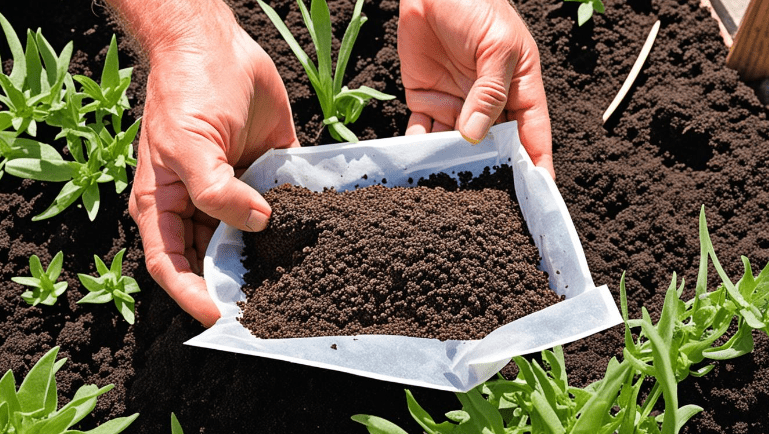
Soil requirements are an important factor to consider when growing bachelor buttons. This plant thrives in well-drained, loamy soil with a pH level of 6.0-7.5. It is important to avoid heavy, waterlogged soil, as this can lead to root rot and other issues. If your soil is not well-drained, you can improve it by adding organic matter such as compost or peat moss. This will help to improve soil structure and drainage, creating a more favorable environment for the bachelor button plant to thrive. Additionally, regular watering and mulching can help to maintain consistent soil moisture levels and promote healthy growth. By ensuring that your soil meets the requirements of the bachelor button plant, you can create an ideal environment for this beautiful and easy-to-grow garden addition.
3.Sunlight and temperature needs
Sunlight and temperature needs are important considerations when growing bachelor buttons. These plants thrive in full sun, meaning they need at least 6-8 hours of direct sunlight each day to grow and bloom to their full potential. They also prefer moderate temperatures, thriving in the range of 65-75 degrees Fahrenheit. If you live in a hotter climate, it’s important to provide some afternoon shade for the plants to prevent them from getting too stressed by the heat. Conversely, if you live in a cooler climate, be sure to plant them in a location that receives plenty of sunlight to keep them warm and promote healthy growth. By providing the right amount of sunlight and maintaining a moderate temperature, you can ensure that your bachelor button plants will thrive and add beauty to your garden.
4.Watering requirements
Watering requirements for bachelor button plants are relatively low, as they are drought-tolerant once established. However, it’s important to water them regularly during dry spells, especially in the summer months. Water the plants at the base to avoid getting the foliage wet, as this can lead to issues such as mildew and other diseases. Mulching around the plants can help to retain moisture in the soil and reduce the need for frequent watering. Overall, providing consistent, moderate moisture will help your bachelor button plants to flourish and produce an abundance of colorful blooms in your garden.
Planting Bachelor Buttons
1.Seed selection and preparation
When selecting seeds for your bachelor buttons, it’s important to choose a variety that suits your climate and soil conditions. Look for high-quality seeds from a reputable supplier, and consider factors such as color, height, and bloom time when making your selection. Before planting, it’s a good idea to prepare the soil by loosening it and removing any weeds or debris. This will provide a good foundation for your plants to grow and thrive. Once the soil is prepared, you can sow the seeds directly into the ground or start them indoors and transplant them later. With the right seed selection and soil preparation, you can set the stage for beautiful bachelor buttons to enhance your garden.
2.Planting methods (direct sowing vs. transplanting)
When it comes to planting bachelor buttons, you have the option of directly sowing the seeds into the ground or starting them indoors and then transplanting them. Direct sowing involves planting the seeds directly into the soil where you want them to grow, while starting them indoors allows you to get a head start on the growing season and then move the seedlings to their permanent location once they are established. Both methods can be successful, so it’s a matter of personal preference and the specific growing conditions in your garden. Whichever method you choose, be sure to provide consistent, moderate moisture to help your plants thrive.
3.Germination process
The germination process for bachelor buttons involves the seed absorbing water and swelling, which then triggers the seed to begin sprouting. This process is influenced by factors such as temperature, moisture, and soil conditions. Typically, bachelor button seeds will germinate within 7-14 days when planted in well-draining soil with consistent moisture and temperatures between 60-70°F. Once the seeds have germinated, it’s important to continue providing adequate moisture and sunlight to support their growth. With proper care, you can expect to see beautiful bachelor button flowers in your garden in just a few weeks.
Care and Maintenance
1.Regular watering and feeding practices
Regular watering and feeding practices are essential for maintaining healthy bachelor button plants. Water your plants consistently to keep the soil evenly moist, but be careful not to overwater, as this can lead to root rot. Fertilize your plants every 4-6 weeks with a balanced fertilizer to promote healthy growth and vibrant blooms. Deadhead the spent flowers to encourage continuous blooming throughout the season. Additionally, monitor for common pests such as aphids or spider mites, and treat as necessary to keep your plants free from damage. By following these care and maintenance practices, you can enjoy a beautiful display of bachelor buttons in your garden all season long.
2.Pruning and deadheading techniques
Pruning and deadheading are important techniques for maintaining the health and appearance of your bachelor button plants. When the flowers start to fade and wilt, it’s important to deadhead them by removing the spent blooms. This not only encourages the plant to produce more flowers, but it also prevents the formation of seeds, which can inhibit further blooming. Additionally, regular pruning can help to shape and control the growth of your plants. Use clean and sharp pruning shears to trim back any leggy or overgrown stems, and remove any damaged or diseased foliage. By practicing these techniques, you can promote healthy growth and ensure a beautiful display of bachelor button flowers in your garden.
3.Pest and disease management
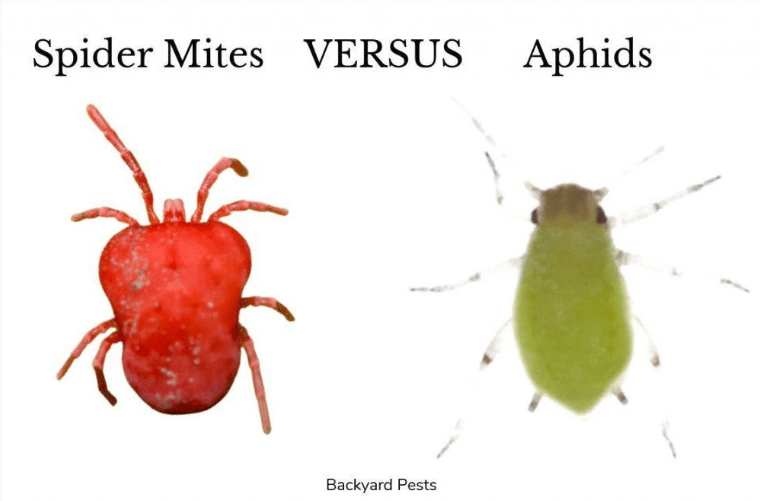
Pest and disease management is crucial for keeping your bachelor button plants healthy and thriving. Common pests that can affect these plants include aphids and spider mites, which can cause damage to the foliage and flowers. It’s important to regularly monitor your plants for signs of pest infestations, such as distorted or discolored leaves, and take action as necessary to control the problem. This may involve using insecticidal soaps or horticultural oils to treat the affected plants. Additionally, keeping the area around your plants clean and free from debris can help to prevent pests and diseases from taking hold. By staying vigilant and taking proactive measures, you can protect your bachelor button plants and enjoy a beautiful and pest-free garden.
4.Tips for ensuring healthy growth
To ensure healthy growth of your bachelor button plants, it’s important to provide them with the proper care and maintenance. This includes planting them in well-draining soil and providing regular watering, especially during dry periods. Additionally, fertilizing your plants with a balanced, all-purpose fertilizer can help to promote healthy growth and vibrant blooms. It’s also important to provide your plants with adequate sunlight, as bachelor buttons thrive in full sun conditions. Lastly, regular deadheading of spent blooms can encourage continuous flowering and prevent the plants from going to seed too quickly. By following these tips, you can help ensure the healthy growth and abundance of bachelor button flowers in your garden.
Benefits and Uses
1.Aesthetic value in gardens and landscapes
Bachelor button plants can add aesthetic value to gardens and landscapes with their vibrant and colorful blooms. They can be used as border plants, in flower beds, or as cut flowers in bouquets. Additionally, they attract pollinators like butterflies and bees, making them a beneficial addition to any garden. The flowers can also be dried and used in arrangements or crafts, adding a decorative element to your home. Overall, bachelor button plants offer both visual beauty and practical uses in gardening and floral arrangements.
2.Attracting pollinators (bees, butterflies)
Bachelor button flowers are known to attract pollinators such as bees and butterflies. This is beneficial for both the plants themselves and the surrounding garden, as it helps to support the pollinator population and promote the health and diversity of the ecosystem. By planting bachelor buttons in your garden, you can create a welcoming environment for these important pollinators, ultimately contributing to the overall health and vitality of your garden and local environment.
3.Medicinal and culinary uses (if any)
While bachelor button flowers are primarily known for their ornamental value, they also have some potential medicinal and culinary uses. The flowers can be used to make herbal teas, with some people believing that they have calming and soothing properties. Additionally, the petals of the flowers can be used as a colorful and edible garnish in salads or desserts. However, it’s important to note that not all varieties of bachelor button flowers are edible, so it’s essential to do thorough research before using them in any culinary or medicinal applications. As always, it’s best to consult with a professional before using any plant for medicinal purposes.
Companion Planting
A common practice in gardening is companion planting, where certain plants are grown together to benefit each other. Bachelor button plants are often used in companion planting because they can attract beneficial insects like ladybugs, which can help control pests in the garden. Additionally, the tall, slender stems of bachelor button plants can provide support for climbing vegetables like beans or tomatoes. This can help maximize the use of space in the garden and promote healthy growth for both the bachelor buttons and the companion plants. Overall, incorporating bachelor button plants into your garden can offer both visual beauty and practical benefits for your overall gardening experience.
Common Problems and Solutions
Bachelor buttons, like any plant, can face common problems such as aphids, powdery mildew, and damping off. To prevent these issues, it’s important to properly care for your bachelor button plants. Make sure to keep the soil well-drained and avoid overwatering, as excess moisture can lead to fungal diseases like powdery mildew. Regularly inspect your plants for pests and use natural remedies such as insecticidal soap to control aphids. Additionally, planting bachelor buttons in well-aerated soil can help prevent damping off, a fungal disease that causes seedlings to wilt and die.
If you encounter any of these problems, it’s important to take action quickly to prevent further damage to your plants. By being proactive and addressing any issues that arise, you can ensure that your bachelor button plants thrive and add beauty to your garden.
Harvesting and Storage
When it comes to harvesting and storing bachelor buttons, it’s important to do so at the right time to ensure the best results. You should wait until the flowers have fully opened before harvesting them, as this is when they are at their peak beauty. To harvest them, simply cut the stems with sharp scissors or pruners, making sure to leave a few inches of stem attached. You can then use the flowers as a lovely addition to bouquets or arrangements, or you can dry them for use in potpourri or crafts. To dry the flowers, simply hang them upside down in a dry, dark place for a few weeks until they are completely dried. Once dried, you can store them in airtight containers to preserve their beauty for months to come. With these tips, you can make the most of the beauty of bachelor buttons in your garden.
Propagation Techniques
When it comes to propagating bachelor buttons, there are a few different methods you can try. One option is to collect seeds from mature plants and sow them directly into the soil in the spring or fall. You can also start seeds indoors and then transplant the seedlings into your garden once they have developed a few sets of true leaves. Additionally, bachelor buttons can be propagated through division, where you divide the clumps of plants and replant them in different areas of your garden. By using these propagation techniques, you can easily expand the presence of the beautiful bachelor buttons in your garden. With their vibrant colors and easy care, they make a wonderful addition to any garden landscape.
In conclusion, bachelor buttons are a beautiful and colorful addition to any garden. With their variety of colors and easy-to-grow nature, they make a great choice for both experienced and novice gardeners. Whether you’re looking to add a pop of color to your garden or attract pollinators, the bachelor button plant is a wonderful option to consider. With the right care and attention, you can enjoy these vibrant flowers in your garden for years to come.
Frequently Asked Question
Bachelor buttons, also known as cornflowers, are annual flowering plants that produce colorful and vibrant blooms in shades of blue, pink, and white.
Bachelor buttons are relatively low-maintenance plants. They prefer full sun and well-drained soil. Water them regularly, especially during dry periods, and deadhead the spent blooms to encourage continuous flowering.
Yes, bachelor buttons can be grown in containers, making them a versatile option for gardeners with limited space. Just make sure the container has good drainage and place it in a sunny spot.
Bachelor buttons can be sown directly in the garden in early spring, once the danger of frost has passed. They can also be started indoors 4-6 weeks before the last frost date and transplanted outside once they have established.
Yes, bachelor buttons are known to attract bees and butterflies, making them a great addition to a pollinator garden.
Yes, bachelor buttons produce seeds that can be collected and saved for the following growing season. Allow the flowers to dry on the plant, then collect the seeds and store them in a cool, dry place.
Bachelor buttons are not considered invasive, but they can self-seed and spread in the garden. To prevent them from becoming too prolific, deadhead the spent blooms before they go to seed
In some cultures, bachelor buttons are associated with love and romance. They have been used in traditional herbal medicine and are also a popular choice for cut flower arrangements
